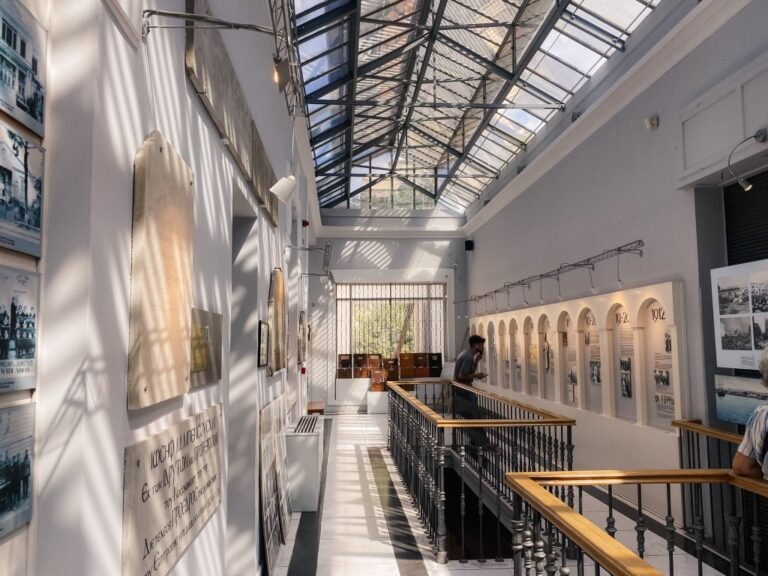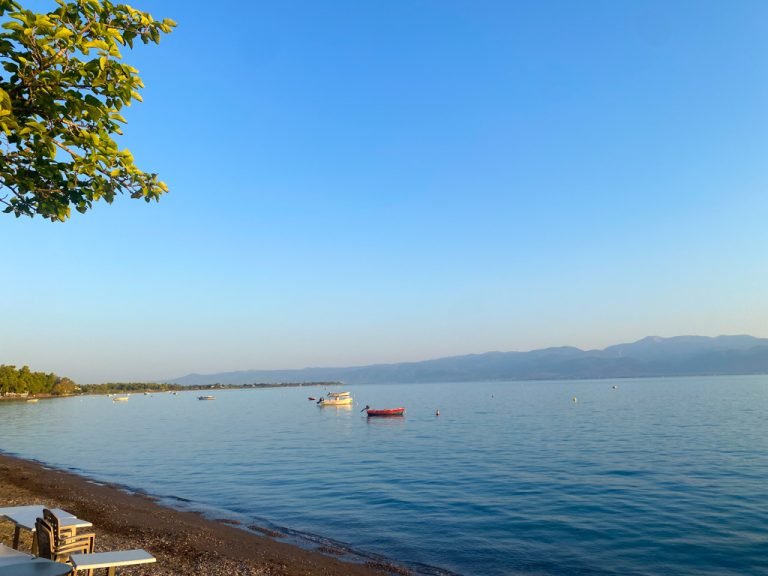This article may contain affiliate links. When you purchase something we recommend, we make a small commission. You don’t pay anything extra. 💘 For more details, check out our Terms of Use page.
With just one day in Copenhagen, you might think there’s no way to see everything, right?
Well, true—but the Danish capital is so easily accessible that even if you have less than 24 hours, a long layover, or a short weekend, you can still make the most of it.
After visiting Copenhagen four times this year, for both work and pleasure, I’ve gathered a few must-see experiences for any visitor.
In this guide, you’ll find practical information, an estimated budget for 24 hours in Copenhagen, and even some options if you want to extend your trip.
Of note… nobody would call Copenhagen an affordable destination. With that out of the way, there are plenty of activities and low-budget options if that is more your vibe. I’ve tried to include options for both.
Table of Contents
ToggleThe Basics
Where is Copenhagen?
Copenhagen is the capital of Denmark, located on the eastern coast of the island of Zealand and connected to Sweden via the Øresund Bridge (a great option if you have more than a couple of days).
How can I get to Copenhagen?
Copenhagen is easily accessible by air, train, or car. The city is served by Copenhagen Airport (CPH), one of Europe’s major international hubs. Budget airlines like Ryanair and Wizz frequently fly here. With flights from major European cities as low as €30, it makes total sense to visit, even for just 24 hours.
How do I get from the airport to the city center?
The easiest way is by train. Trains run frequently from the airport to Copenhagen Central Station, taking just 15–20 minutes. Alternatively, the metro connects several parts of the city and takes about 30 minutes. Your default departure station will be “Københavns Lufthavn” to go from the airport and back.
Do I need to rent a car?
I would say no. Copenhagen is extremely walkable and bike-friendly, and public transport is efficient and reliable. Renting a car is unnecessary but if you must, check out Discover Cars, a provider I use and recommend when traveling in Europe and abroad.
Should I buy a transport pass?
Yes! Download the DOT Tickets app and purchase a 24-hour pass. For about 90 DKK (€13), you’ll have unlimited transport in the city or the capital region for the day.
Traveling to more places in Scandinavia? Check out more resources and apps I recommend here.
Is the Copenhagen Metro 24 hours?
Yes. All four metro lines run 24 hours a day. During the night, expect trains every 20 minutes (compared to 3-minute intervals during rush hour). Download the app for updates or changes.
Do I need cash when visiting Copenhagen?
Not really. Most places accept credit cards and e-wallets, and many no longer accept cash at all. If you do need DKK, ATMs are widely available and offer fair exchange rates.
How is the weather?
Expect the unexpected. Frequent rain and wind are common, even in summer. During my visits between March and June, sudden rain showers were a constant. On sunny days, though, the city feels like heaven!
Suggested Itinerary for 24 hours in Copenhagen
- Start with a Stromma Canal Tour
- Take a Bike Tour
- Enjoy Smørrebrød for lunch at Fleisch
- Visit Christiania
- Head to Copenhill
- End the Day at Reffen (or Tivoli Gardens)
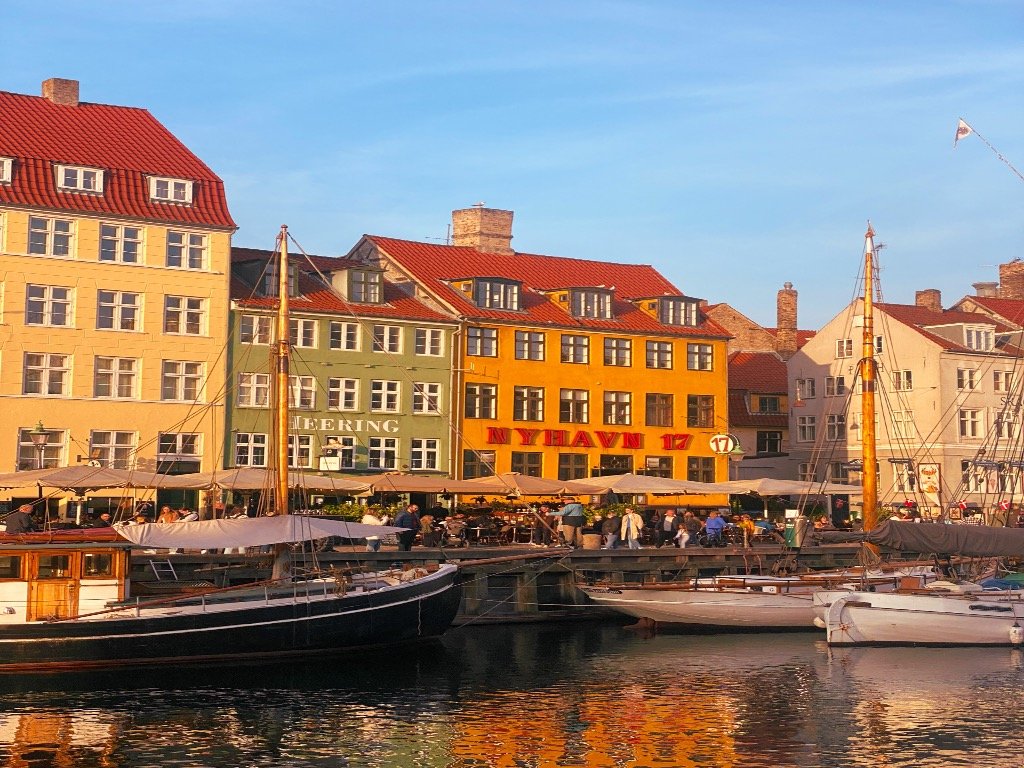
Start with a Stromma Canal Cruise
Stromma is one of the top providers offering canal cruises from various locations. Since it’s a company I’ve used and enjoyed, I’m happy to recommend them.
Adding a cruise to your itinerary has plenty of benefits when you only have one day in Copenhagen. You’ll get to see key spots and landmarks, including the Little Mermaid Statue, which is less accessible otherwise, the Opera House and also Nyhan (New Harbor), the iconic houses across the waterfront.
There are live and audio-guided tours (I’d recommend the live option if you’re comfortable with English). You can also choose between a 1-hour or 1-hour-45-minute tour. I find 1 hour is more than enough, especially if the weather isn’t great.
- Tip: Pick Ved Stranden as your departure point if you want to follow the rest of this itinerary.
- There is a slightly more expensive tour on an electric boat (and way fewer crowds) that is linked below as well.
Ticket Cost: €15 for the 1-hour tour.
Bike Tour Exploration
Weather permitting, a bike tour (guided or solo) is an excellent way to experience Copenhagen’s local transport culture. While biking in Copenhagen can feel intimidating at first (there are strict rules and many locals zipping to work), semi-experienced cyclists should have no problem navigating.
The team at beCopenhagen, located right next to Ved Stranden (the canal cruise departure point), offers guided tours starting at around €50 per person. Alternatively, rent a public bike from Donkey Republic and explore the city at your own pace.
Rental Cost: Approx. DKK 75–400 (€10–€50) per day, depending on your rental choice.
Smørrebrød for Lunch at Fleisch
After all that biking, it’s time for lunch. Nothing says “Danish experience” like smørrebrød, the classic Danish open-faced sandwich. For a chance to explore another interesting area, head to Fleisch in the Meat Packing District.
Fleisch is known for its modern take on smørrebrød, crafted with fresh, high-quality ingredients. Recommended options include:
• Chicken Salad: Smoky bacon, pickled mushrooms, and celery.
• Egg and Shrimp: A light, flavorful favorite.
• Fried Fish Fillet: Crispy, fresh, and paired with a tangy remoulade.
Feeling adventurous? Try the Beef Tartar or Curry Herring for a bolder taste.
Cost: €20–€40 per person, depending on the number of dishes and drinks.

Explore Christiania
After lunch, head to Christiania (also known as Staden). This self-governed community is famous for its artistic atmosphere and alternative lifestyle. Its colorful art, laid-back vibe, and intriguing history make it a top attraction in Copenhagen.
Be mindful of Christiania’s unique rules, particularly around Pusher Street:
- 1. No photos.
- 2. No running.
- 3. No talking on the phone.
A guided tour is highly recommended to understand the area’s transformation from military barracks in the 1970s.
Christiania used to be known as the area to buy weed (legally) which isn’t the case (not the legal part anyway). The area around Pusher Street is still bustling with activity, hence the no photo rule that should be obeyed unless you can avoid residents seeing you.
Cost: Free to enter; guided tours are optional.
Head to Copenhill
Copenhill is one of Copenhagen’s most iconic landmarks and the brainchild of Bjarke Ingels. This waste-to-energy plant combines innovative Danish design with sustainable practices, creating a unique recreational space.
Visitors can enjoy the rooftop views, go for a walk, or even try the grass ski slope—designed for seasoned skiers looking to hone their skills. You don’t need to purchase a ticket to visit the rooftop and explore the area.
- Tip: If you skip buying a tour of the premises, make sure to read up on the scandals surrounding the chimney design, by the now-convicted Peter Madsen.
Cost: Free to visit; ski slope access is about €27 for one hour.


End Your Day with Dinner at Reffen
Reffen is a seasonal food truck market, open during the warmer months. It’s a must-visit for its quirky art, diverse food options, and waterfront views.
Getting there from Copenhill is easy, either by bus or on foot. If you have time, consider a quick stroll around Urban Rigger, a student housing project made from shipping containers—another example of Copenhagen’s creative use of space.
The area surrounding Refshaleøen is undergoing significant real estate developments, which might alter the post-industrial charm of the island in the near future. This makes Reffen an even more essential stop during your visit.
If the weather is particularly bad or is not open during the winter… there is an alternative!
Cost: Can range depending on what to order. For €10 euro you can get a small meal, but expect to pay up to €30 per person if you want to try a few different things, including drinks.


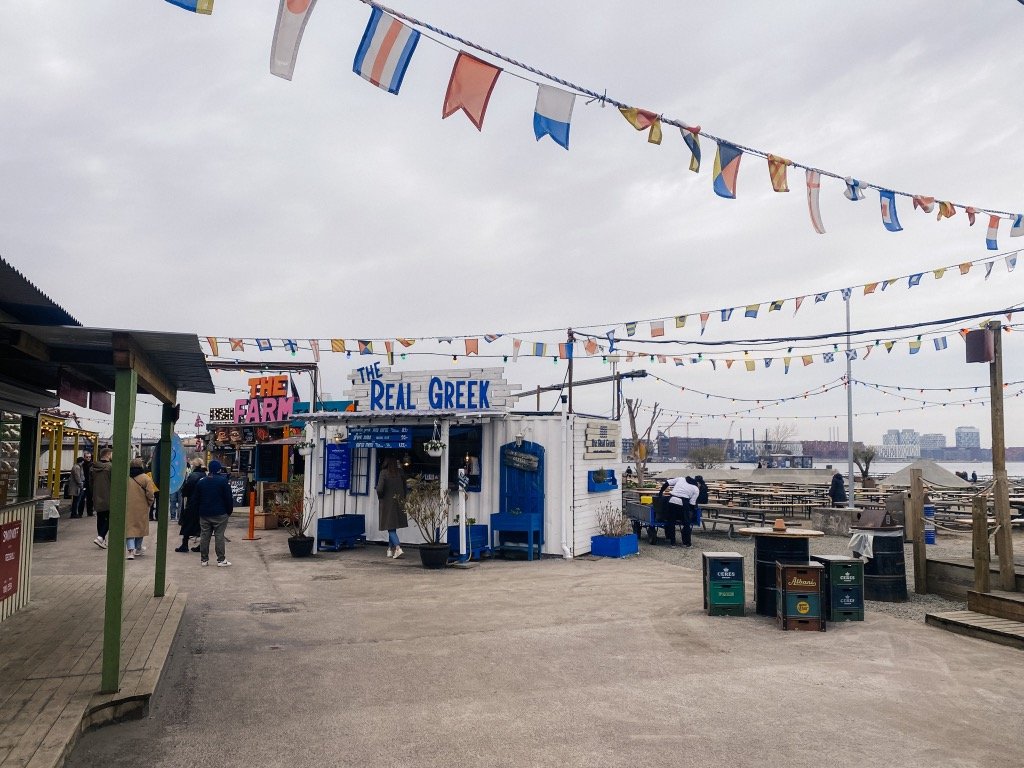

Alternative: End the Day at Tivoli Gardens
Whether you have heard of Tivoli or not, it will catch your eye from the moment you arrive at the Central Station.
Tivoli Gardens is a world-famous amusement park and is famously considered to be the for Walt Disney’s parks.
More than just rides though, Tivoli includes gardens that are lovely to explore on a spring or summer’s day and great food courts.
After visiting Tivoli 4 times during the last year, even during windy and colder days, I must say it never fails to amaze or provide something new to explore.
Cost: Entrance to Tivoli costs €24 euros, which doesn’t include the ride pass. You can combine an entrance pass with unlimited rides for about €55 euro. The price ranges depending on the day and time visited. This doesn’t include food which can range from €20 – €40 per person.
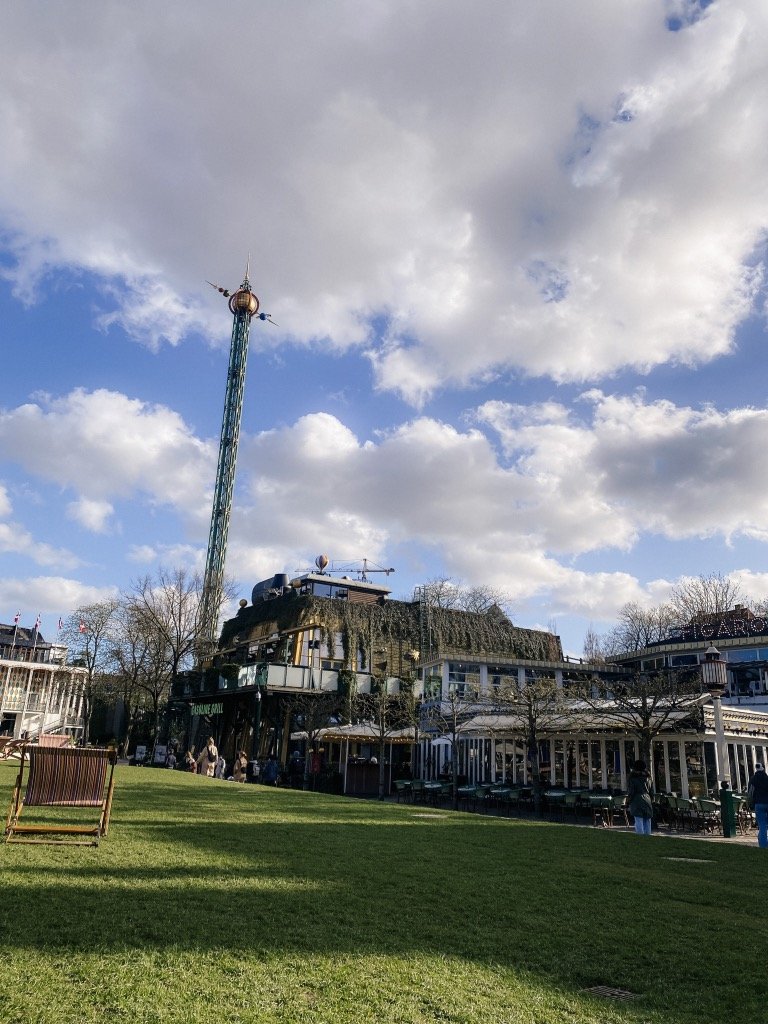


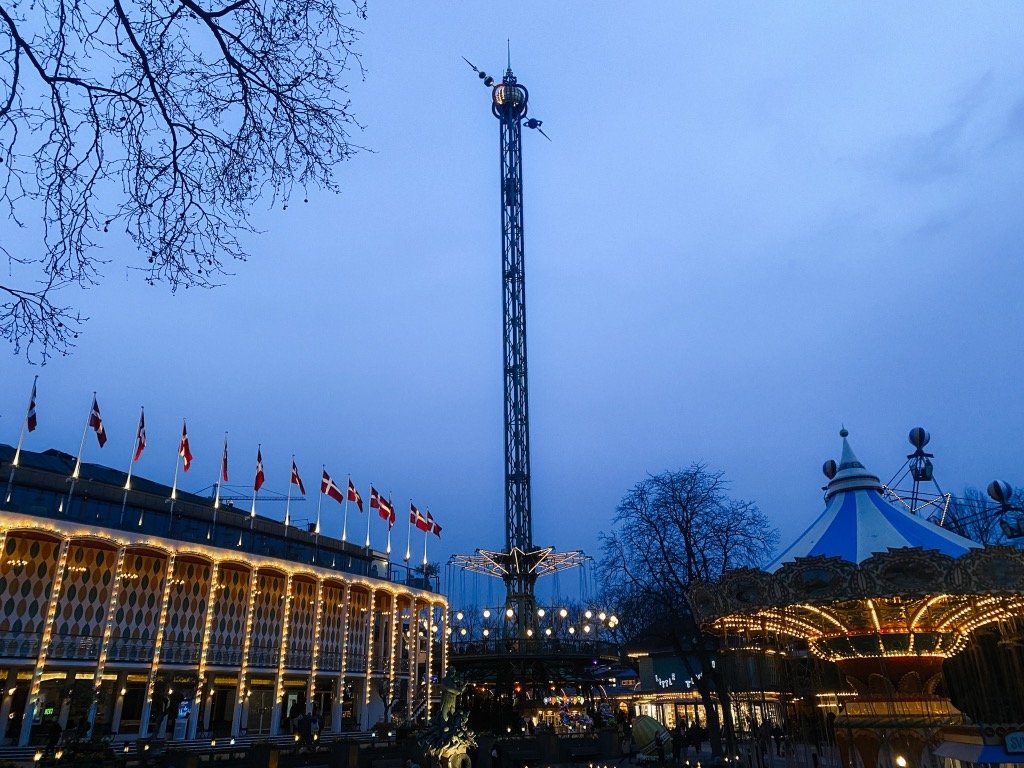
What to do if you have more time?
•The National Museum of Denmark: Learn about the country’s history and Viking heritage.
•Rosenborg Castle: Stop by this 15th century Renaissance masterpiece, originally built as the summer retreat for Christian IV.
•Day Trip to Malmö, Sweden: Take the train across the Øresund Bridge in just 40 minutes.
•Church of our Saviour: Enjoy 360 views from the top of the gold spiral.
•Rundetaarn or Round Tower: Another great view point, also has a small library.
•Ordrupgaard: While quite further out the city, this stunning art museum has one of the most important collections of Danish and French art. Originally a home built for Wilhelm Hansen and then transferred to the Danish State, it includes a new extension by architect Zaha Hadid.
Cost: Entrance to Tivoli costs €24 euros, which doesn’t include the ride pass. You can combine an entrance pass with unlimited rides for about €55 euro. The price ranges depending on the day and time visited. This doesn’t include food which can range from €20 – €40 per person.
Where to stay in Copenhagen
While flights can be cheap, one thing that will add a lot to the budget (in addition to food) is accommodation. Even mid-range accommodation options will be over €100 with higher prices during peak season.
The best areas to stay in Copenhagen when you have limited time are:
- Vesterbro – close to Tivoli and Central Station
- Indre By – city centre
- Nørrebro – more budget friendly outside the main city
All these options are great due to the amazing public transport system. If you want to do more walking then I would choose Veesterbro or Indre By.
A few great options in those areas area:
- Scandic Kødbyen
- Steel House Copenhagen (hostel)
- Wakeup Copenhagen Borgergade
- Motel One Copenhagen
- CityHub Copenhagen
I hope this guide gives you an idea of things to do and see in Copenhagen in 24 hours, or 2 days for an extended trip. It is a wonderful city that makes for great repeat visits and always has something new to offer.
More guides on longer trips, day trips to other cities and food guides to follow, so join the newsletter list if you prefer to stay in the loop that way. If you have any questions, send me an email or leave a comment and I’ll reply to the best of my knowledge.
ESSENTIAL INFORMATION
Must Know When Visiting Denmark
- Emergency: Dial 112 for all emergencies. Dial 114 for all life threatening situations.
- Language: English is widely spoken in most tourist areas. Common phrases to learn are “Tuk” (Thank you), “Goddag” (Good day).
- Water: Tap water is safe to drink in Denmark.
- Driving: Right-hand side, international driving permit recommended. Book your rental car with Discover Cars for the best rates and comparisons across all major and local companies.
- Accommodation: Booking.com for the most options on hotels, apartments and hostels. Free cancellation in a lot of places and no need to pre-pay. Great for their rewards points system.
- Islands: There are a lot of islands, spread out around the country. Only 78 over almost 400 are inhabited.
- Activities: From cultural sights to day trips, food tours and city guides, use Get Your Guide.
- Public Transport: For Copenhagen use DOT. For trains use DSB. For journey planning around Denmark use Rejseplanen. If you are in Aarhus and Central Jutland use Midttrafik.



